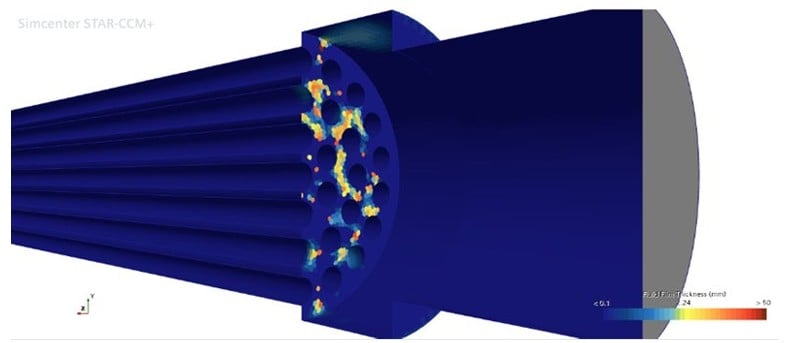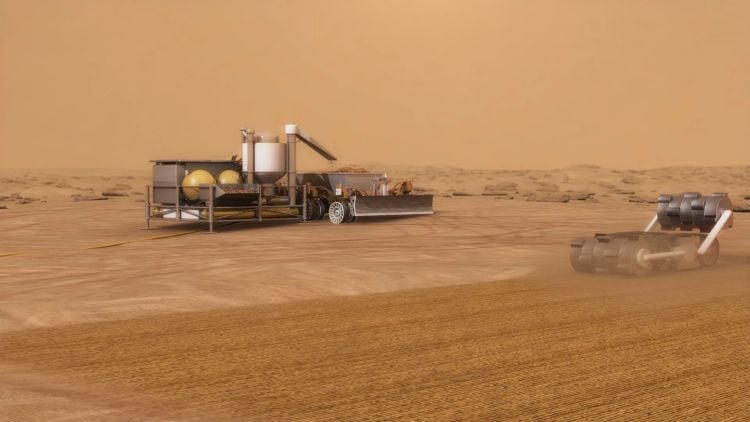Computational Fluid Dynamics. Those words are enough to strike fear into the heart of many an undergraduate engineer. Modeling how liquids move through a system is mathematically challenging, but in many cases, absolutely vital to understanding how those systems work. Computational Fluid Dynamics (more commonly called CFD) is our best effort at understanding those complex systems. A new paper from researchers at the University of Texas at El Paso (UTEP) applies those mathematical models to an area critical for the upcoming era of space exploration - propellant production from in-situ resources.
In-situ resource utilization (ISRU) has garnered much research attention lately, as it utilizes resources available in space and on other planetary bodies to fulfill mission requirements. Every bit of resource used in space is one saved from escaping Earth's gravity well, thereby decreasing the mission's cost, since a mission's launch costs typically make up a large chunk of its overall price.
One of the most common ISRU applications under development is the creation of rocket fuel from sources on the Moon and Mars. NASA has worked with OxEon Energy, a company based in Utah, to develop a combination methanation reactor and Solid Oxide Electrolysis (SOE) system. That system is part of a larger ISRU system that takes in lunar soil as a feedstock and produces oxygen and methane, which can be used as rocket fuel.
 Graphical Representation of the CFD model of the condenser.
Graphical Representation of the CFD model of the condenser.
Credit - H. Frankland et al.
In between the methanation reactor and the SOE system, there is a condenser intended to separate the water from the methane. That condenser, a "commercial off-the-shelf" (COTS) component when the overall system was tested at NASA Jet Propulsion Laboratory, was the target of the author's CFD efforts.
Rather than authors writing a model from scratch (which, if undergraduate CFD classes are anything to go by, is only something an insane person would do), Hunter Frankland, an intern at UTEP's Aerospace Center, and the authors used a software package to complete their modeling. They chose STAR-CCM+, a system developed by engineering giant Siemens that is commonly used throughout the industry.
The model had two important numbers: the condensation rate and the gas mass flow rate. The condensation rate is the amount of liquid water condensed out of the process gas over a specific period and is calculated as grams/hour. The gas mass flow rate is the total amount of gas that flows through the condenser and is also calculated as grams/hour.
Fraser discusses ISRU and its advantages.
Every CFD model should have something to compare itself against, and the UTEP model is no different. Luckily, they had data collected as part of JPL's test of the ISRU system. The model's calculations were within 7.3% of the test data JPL found for the condensation rate and 2.2% for the gas mass flow rate. Both of those errors are relatively good in the CFD world and would be considered to represent an accurate model of the system.
So why do all this fancy math for a system we already have test data on? The answer is simple - scalability. The intention of the ISRU system on the Moon would be to create orders of magnitude more propellant than the system tested at JPL. A CFD model such as the one described in the paper could be used to scale the system up, estimating the sizing of components for when a full-scale prototype, or even the real thing, would be manufactured.
That is still a long way off, but the paper itself represents a nice, clear-cut use of a valuable engineering tool for a useful space exploration challenge. There will undoubtedly be many more to come before we successfully scale an ISRU propellant production system on the Moon.
Learn More:
H. Frankland et al -CFD Validation and Scaling of a Condenser used in an ISRU Propellant Production System
UT -What is ISRU, and How Will it Help Human Space Exploration?
UT -Modeling Lunar ISRU Extraction Can Help Plan Future Prototypes
UT -Some Lunar Regolith is Better for Living Off the Land on the Moon
 Universe Today
Universe Today
